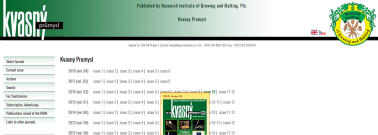Contamination from the environment as a source of bottled water off-odour: a case study
DOI:
https://doi.org/10.18832/kp201821Keywords:
quality, beverage, water, off-odour, volatile compounds, SPME-GC/MS/OAbstract
The aim of this work is to devise a methodology and identify the cause of off-odour in bottled water. For initial screening, sensory analysis and gas chromatography with mass spectrometry and olfactometric detector were used. Selected compounds were then analyzed and quantified by selective ion monitoring. 2,4-decadienal, a fatty acid oxidation product, was identified as the source of off-odour. It is produced during frying and it can diffuse through the packaging material into the product. Its concentration in three analyzed samples ranged from <0.15 μg/l to 3.1 μg/l. Since its detection threshold is 1 μg/l, improper storage conditions can decrease the sensory quality of bottled water.







